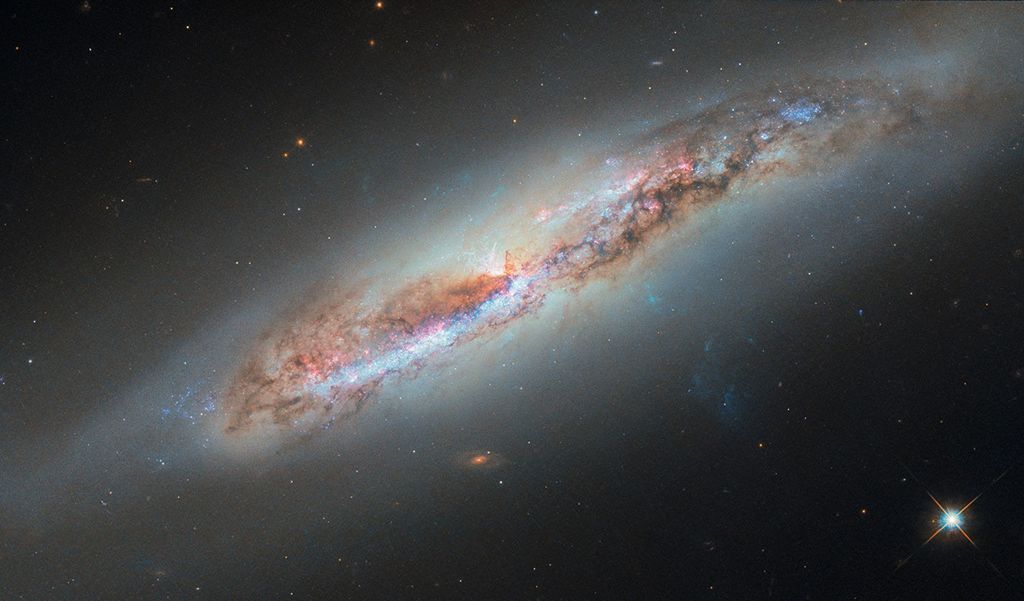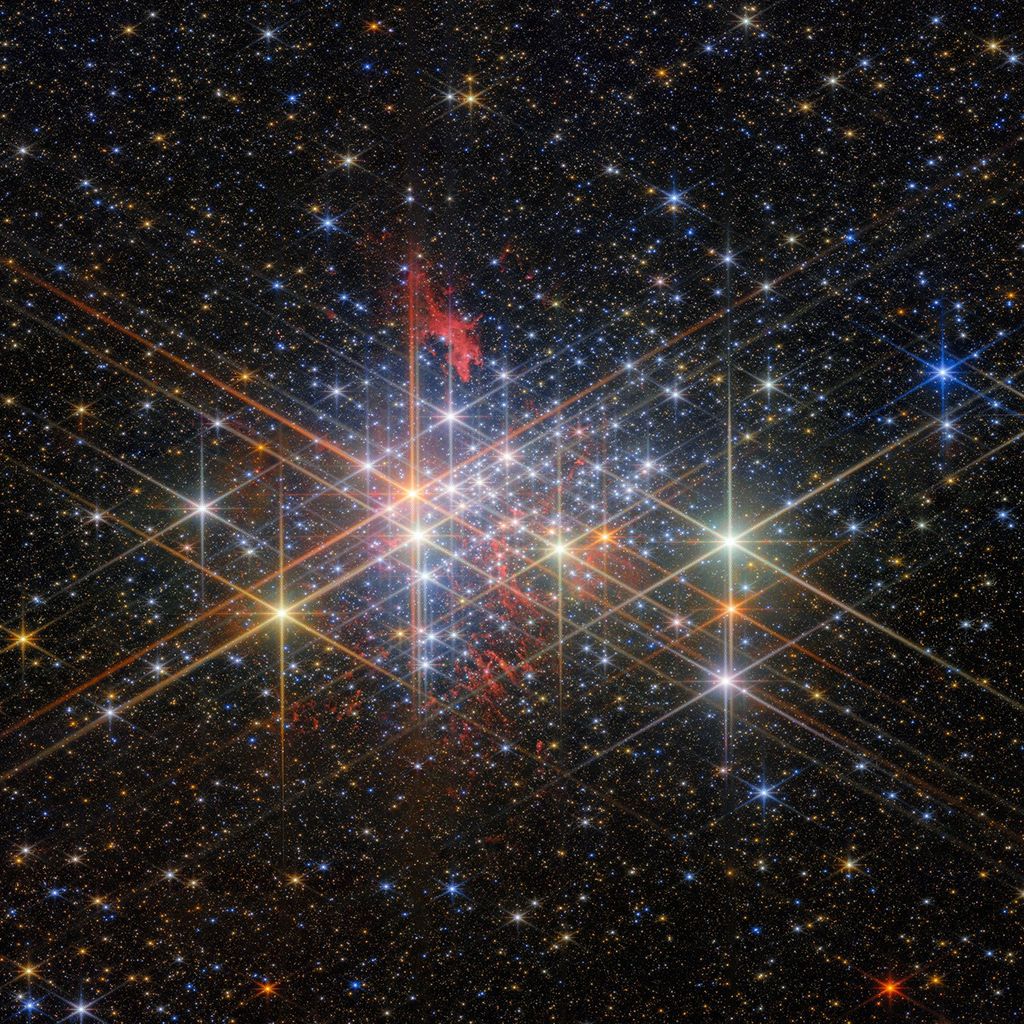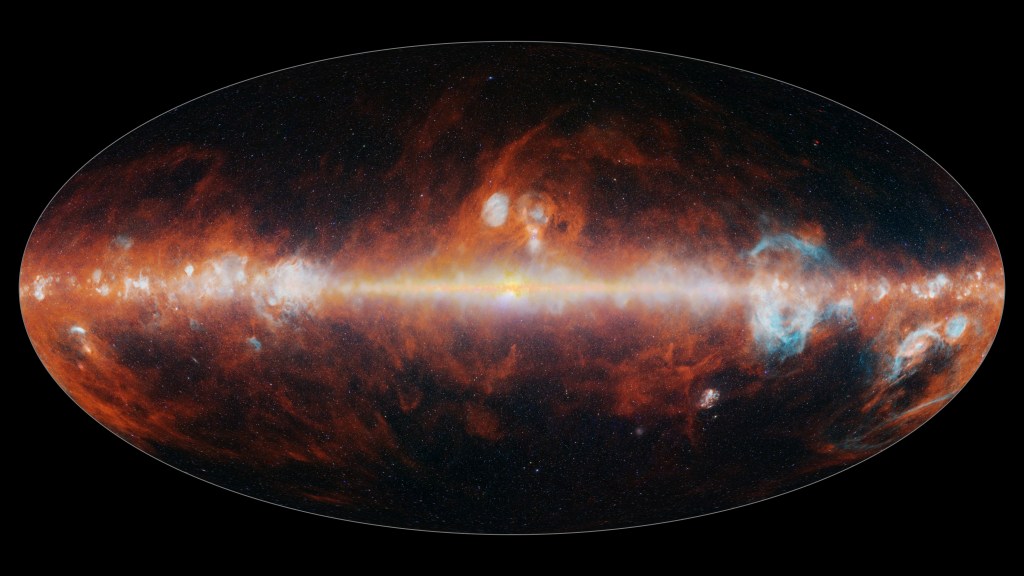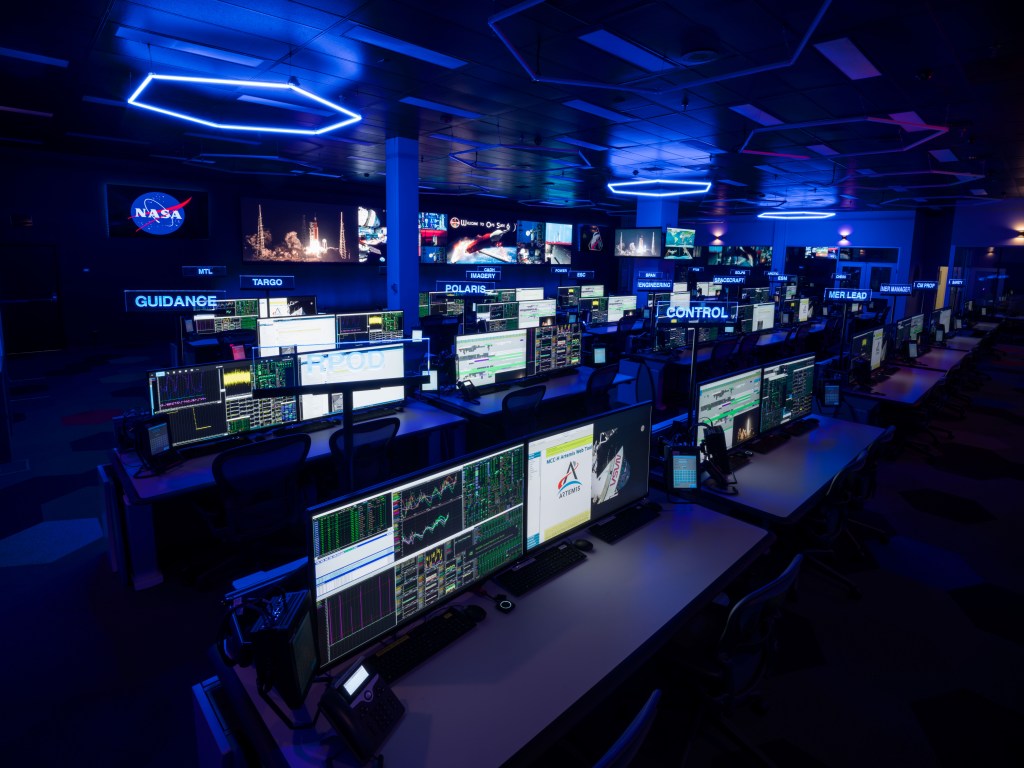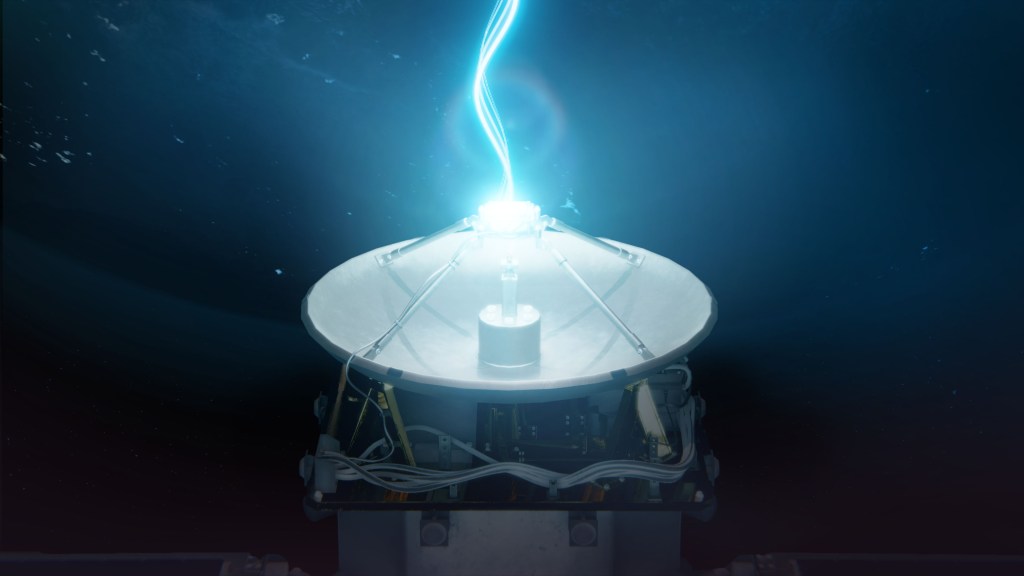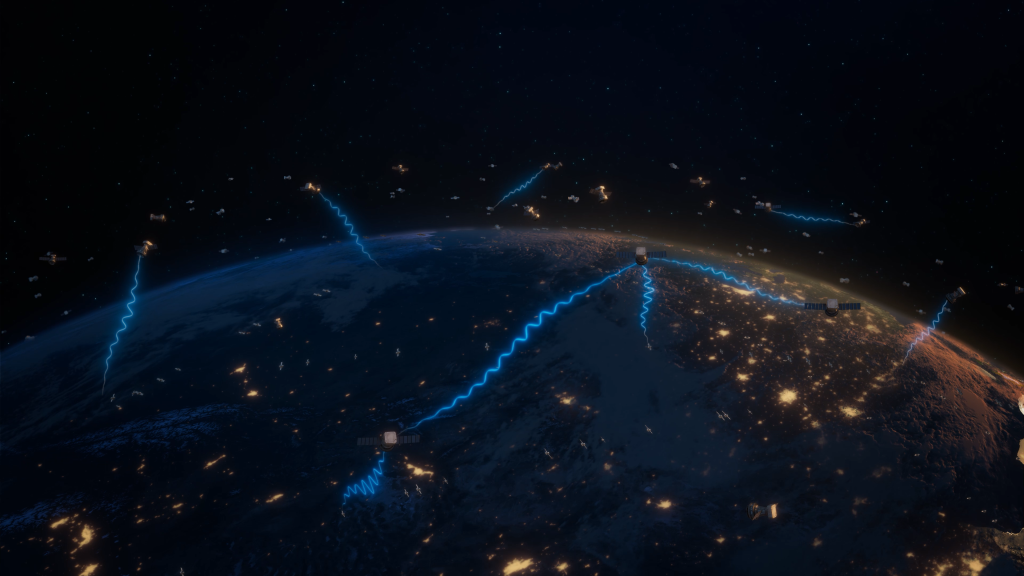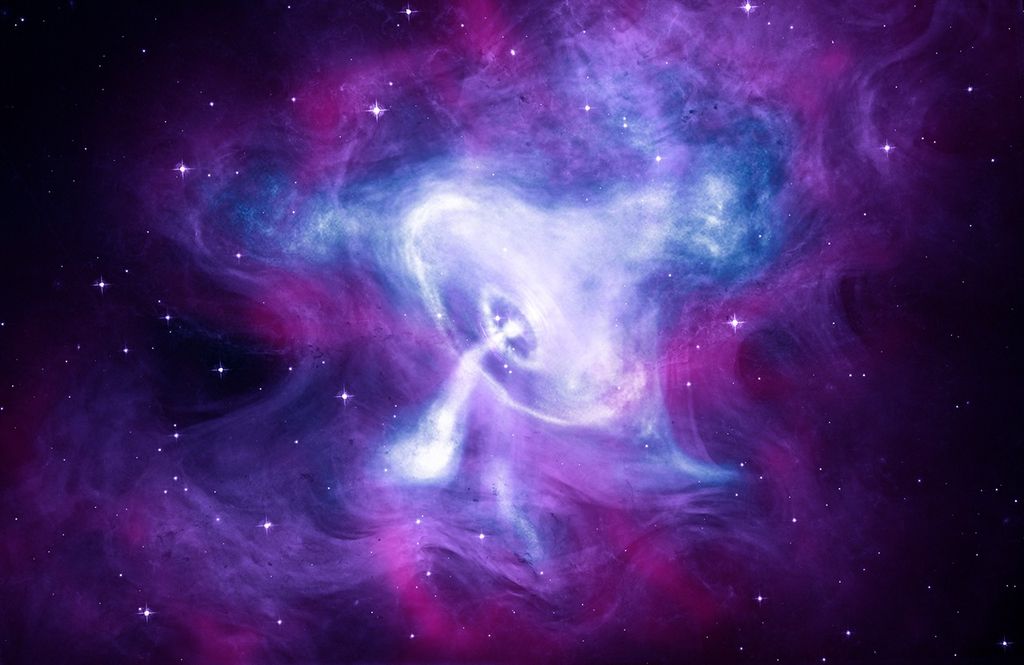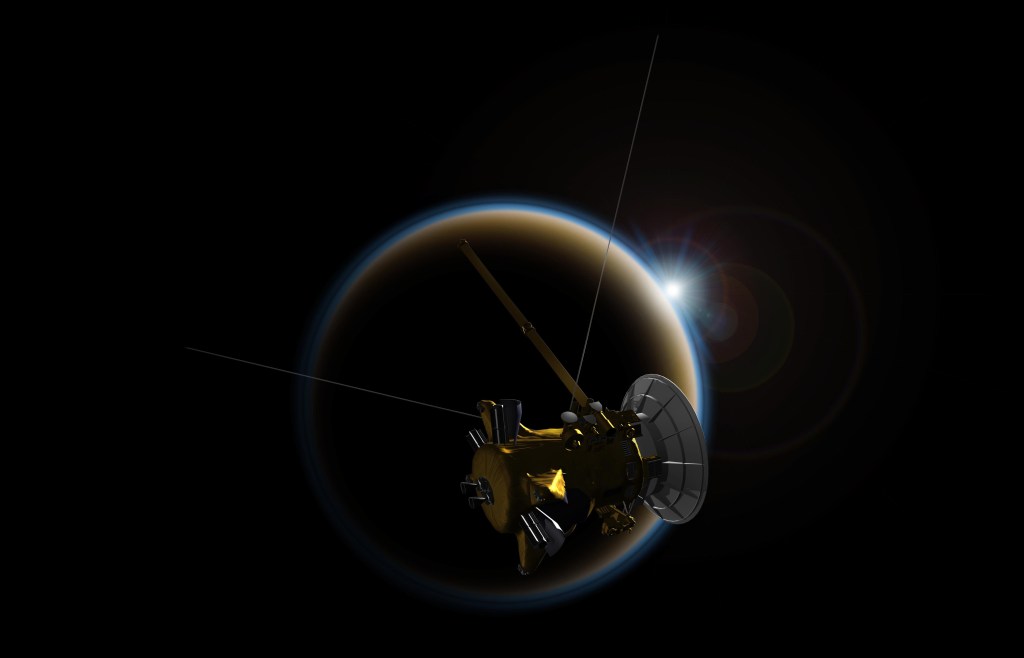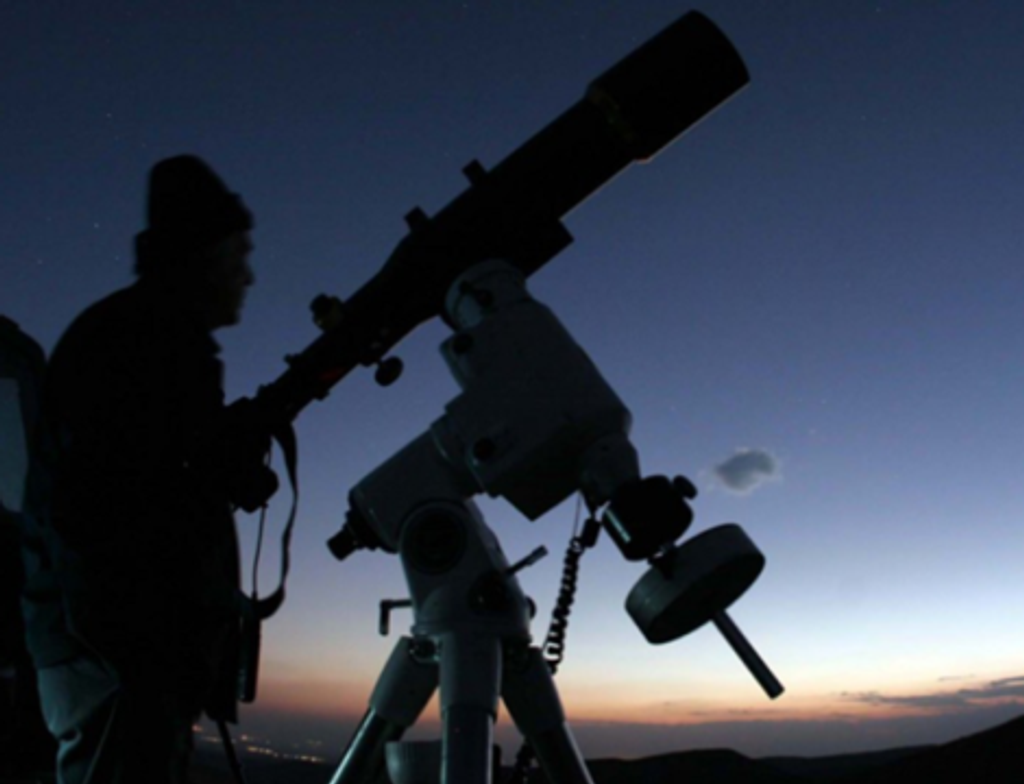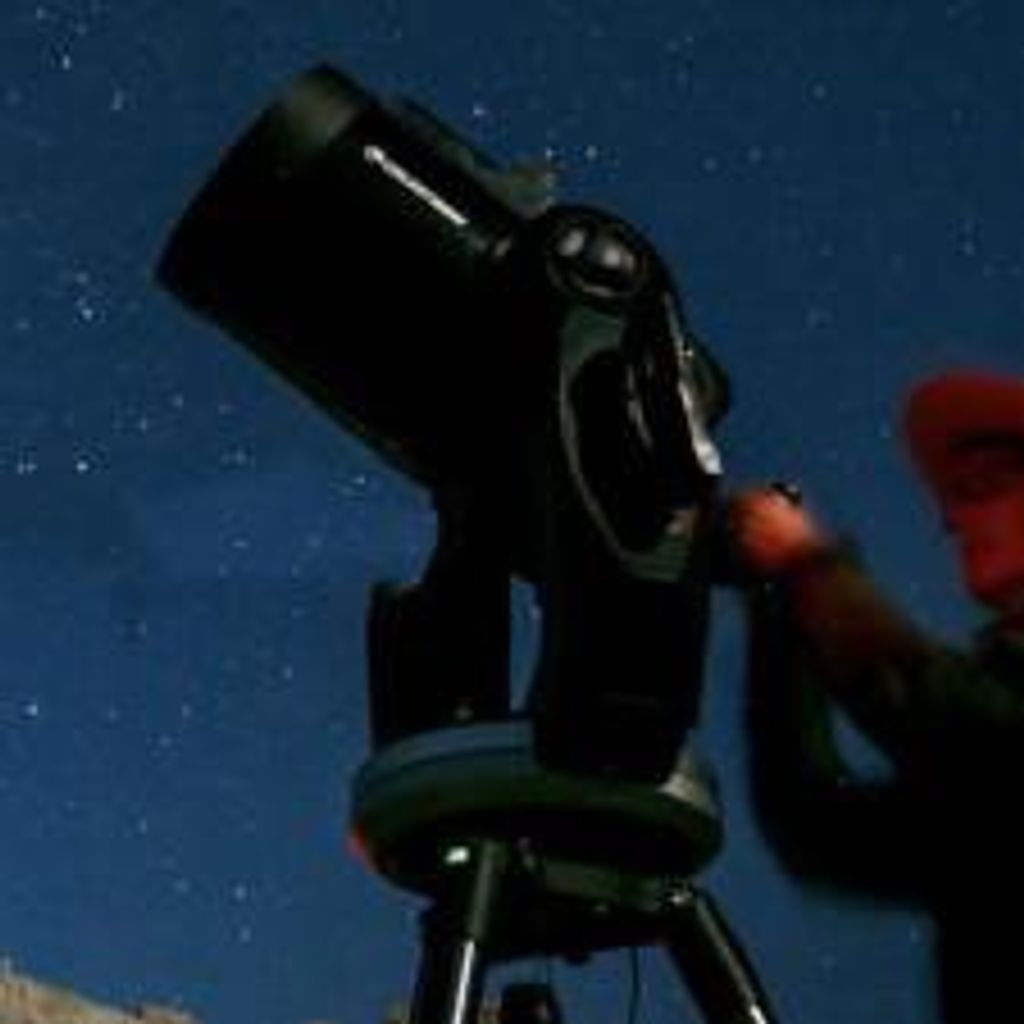1 min read
Hubble Monitors Evolution of Dust Plume Following Deep Impact’s Collision with Comet
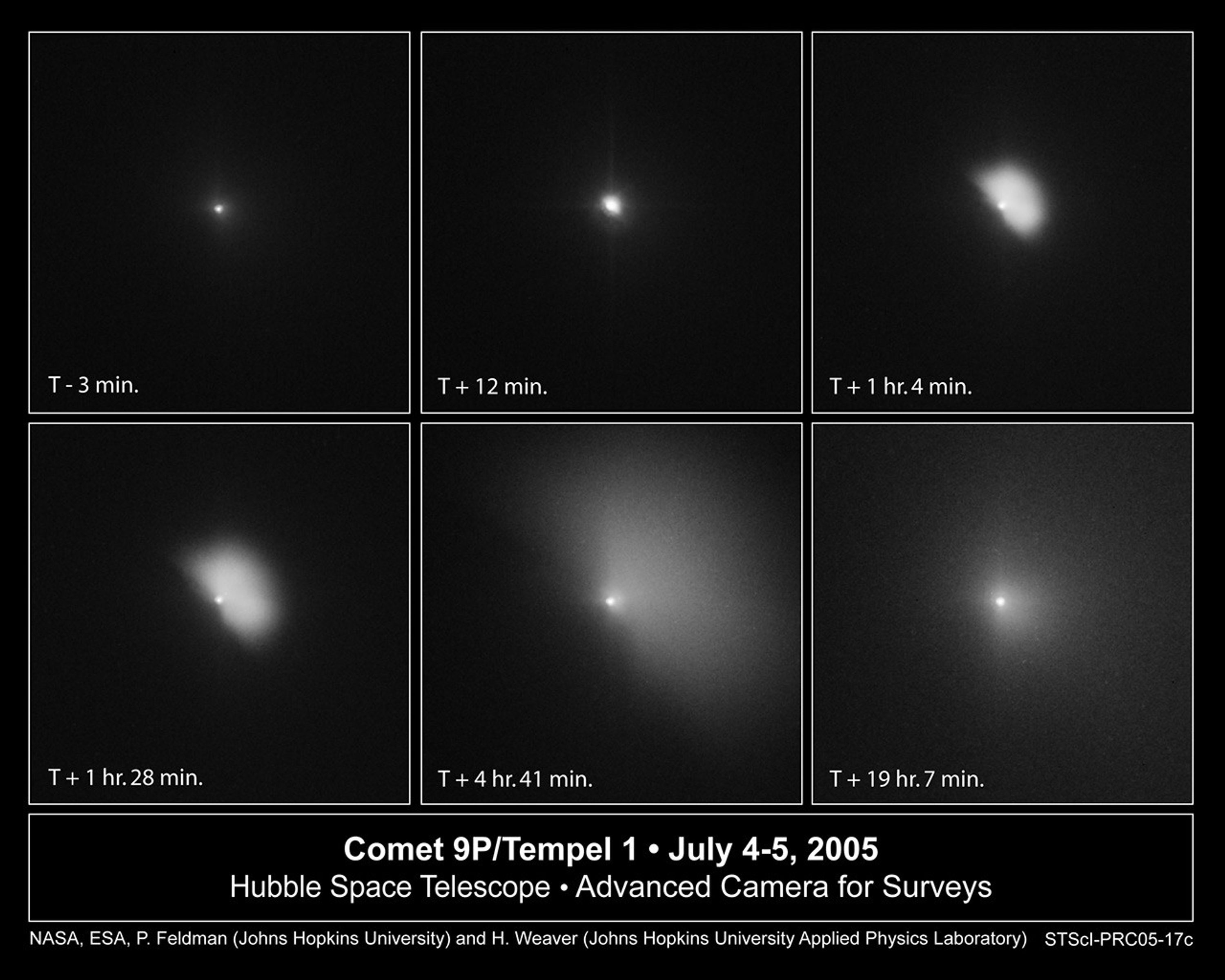
This series of Hubble Space Telescope images captures the ejection of a bright plume of dust following the July 4 collision between an 820-pound projectile released by the Deep Impact spacecraft and comet 9P/Tempel 1. The image sequence dramatically shows the evolution of material that was blasted off the comet as it expands and diffuses into interplanetary space.
This sequence of images shows the fan-shaped ejecta expanding at 450 miles an hour (720 kilometers an hour) over a 24-hour period following impact. The upper-left image shows the comet several minutes before impact. The encounter occurred at 1:52 a.m. EDT July 4.
The middle, top image shows that just 12 minutes after the collision, the innermost coma of dust appears 10 times brighter than in the pre-impact photo. The impact caused a brilliant flash of light and a constant increase in the brightness of the inner cloud of dust.
The Hubble telescope continued to monitor the comet, snapping another image [upper right] an hour after the encounter. In this photo, the dust ejected during the impact is expanding outward in the shape of a fan. The debris extends about 450 miles (720 kilometers) from the nucleus. This expansion continues through the bottom series of photos. In the bottom, center photo, the cloud is 2,000 miles (3,200 kilometers) across. The last picture in the sequence shows the cloud becoming more diffuse.
The potato-shaped comet is about 8 miles (13 kilometers) long and 2.5 miles (4 kilometers) wide. Tempel 1's nucleus is too small for the Hubble telescope to resolve. Instead, the bright central region is a combination of light reflected from the nucleus and from dust in the immediate region around the nucleus.
The visible-light images were taken by the Advanced Camera for Surveys' High Resolution Camera.
About the Object
- DistanceDistanceThe physical distance from Earth to the astronomical object. Distances within our solar system are usually measured in Astronomical Units (AU). Distances between stars are usually measured in light-years. Interstellar distances can also be measured in parsecs.The comet was approximately 0.91AU (136 million km, 85 million miles) from Earth and approximately 1.51AU (224 million km, 139 million miles) from the Sun at the time of these exposures.
- DimensionsDimensionsThe physical size of the object or the apparent angle it subtends on the sky.July 4, 2005
About the Data
- Data DescriptionData DescriptionProposal: A description of the observations, their scientific justification, and the links to the data available in the science archive.
Science Team: The astronomers who planned the observations and analyzed the data. "PI" refers to the Principal Investigator.The Hubble image was created from HST data from proposals 10456: P. Feldman (Johns Hopkins University), M. A'Hearn (University of Maryland), M. Belton (National Optical Astronomy Observatories), K. Meech (University of Hawaii), H. Weaver (Johns Hopkins University Applied Physics Laboratory). - InstrumentInstrumentThe science instrument used to produce the data.HST>ACS/HRC
- Exposure DatesExposure DatesThe date(s) that the telescope made its observations and the total exposure time.July 4, 2005
- FiltersFiltersThe camera filters that were used in the science observations.F606W (V)
- Object NameObject NameA name or catalog number that astronomers use to identify an astronomical object.9P/Tempel 1
- Object DescriptionObject DescriptionThe type of astronomical object.Periodic Comet
- Release DateJuly 4, 2005
- Science ReleaseHubble Captures Deep Impact’s Collision with Comet
- Credit
Related Images & Videos

Deep Impact Space Probe Collides With Comet
NASA's Hubble Space Telescope captured the dramatic effects of the collision early July 4 between an 820-pound projectile released by the Deep Impact spacecraft and comet 9P/Tempel 1. This sequence of images shows the comet before and after the impact. The image at left shows...

Hubble Images Comet Tempel 1 Just Before Deep Impact Probe Arrives
NASA's Hubble Space Telescope has snapped an image of Comet 9P/Tempel 1 just days before the Deep Impact spacecraft is scheduled to rendezvous with the comet. This image, taken on the morning of June 30, 2005, shows an undisturbed and quiet comet. This Advanced Camera for...

Time-Lapse of Expanding Debris from Comet – July 4
This time-lapse sequence of 20 images, taken by NASA's Hubble Space Telescope, reveals the dramatic effects from a collision early July 4 between comet 9P/Tempel 1 and an 820-pound probe released by the Deep Impact spacecraft. The Deep Impact probe smacked the comet at 1:52 a.m....

Time-Lapse of Expanding Debris from Comet – July 4 (Annotated)
This time-lapse sequence of 20 images, taken by NASA's Hubble Space Telescope, reveals the dramatic effects from a collision early July 4 between comet 9P/Tempel 1 and an 820-pound probe released by the Deep Impact spacecraft. The Deep Impact probe smacked the comet at 1:52 a.m....

Time-Lapse of Expanding Debris from Comet – July 4–5
This time-lapse sequence of 20 images, taken by NASA's Hubble Space Telescope, reveals the dramatic effects from a collision early July 4 between comet 9P/Tempel 1 and an 820-pound probe released by the Deep Impact spacecraft. The Deep Impact probe smacked the comet at 1:52 a.m....

Time-Lapse of Expanding Debris from Comet – July 4–5 (Annotated)
This time-lapse sequence of 20 images, taken by NASA's Hubble Space Telescope, reveals the dramatic effects from a collision early July 4 between comet 9P/Tempel 1 and an 820-pound probe released by the Deep Impact spacecraft. The Deep Impact probe smacked the comet at 1:52 a.m....
Share
Details
Claire Andreoli
NASA’s Goddard Space Flight Center
Greenbelt, Maryland
claire.andreoli@nasa.gov

